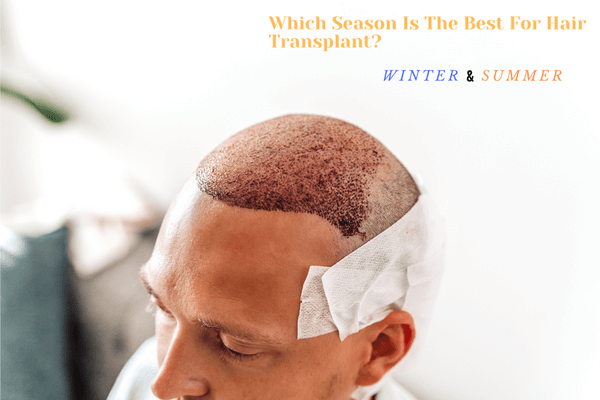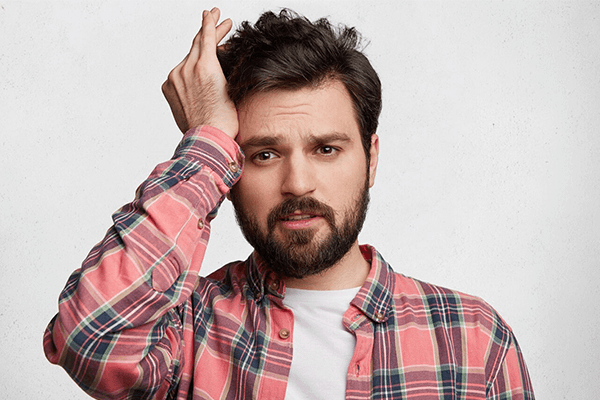
Why Causes of Hair Transplant Crusting?
Many complications develop after hair transplantation. One of these complications is crusting of the hair. This situation, which varies from person to person, usually occurs 1 or 2 weeks after the transplantation process. You can have detailed information about the process by reviewing our content “Why Does Crusting Occur After Hair Transplantation?”, which we have prepared about what to pay attention to during the crusting process, which is quite natural.
What Causes Crusting After Hair Transplant?
There are many conditions that indicate that the hair transplantation process is positive. One of these is the crusting that occurs after hair transplantation. Although the crusting that occurs in the hair follicles is a very natural condition, it is very likely to disappear when cared for regularly and correctly. Therefore, there is no need to worry.
The cause of this condition in the hair can generally be called the healing process. For example; this complication, which usually occurs 3 days after hair transplantation, is a sign that the grafts are healthy and the healing is going correctly. Therefore, when the bleeding in the hair follicles stops, crusting occurs. These crusts also protect the incisions opened for the transplantation of the grafts in the hair transplantation process from bacteria and germs. Therefore, it also acts as a kind of protective shield.
What Can Be Done To Prevent Crusting After Hair Transplant?

Although this crusting of the hair follicles is a natural process, it can last longer in some people. This situation can sometimes lead to psychological conditions in people. In such cases, it is useful to keep the hair moisturized. For this, you should wash the hair gently without damaging the hair follicles in the time period recommended by your doctor. When washing, we strongly recommend that you wash with the shampoos given by your doctor. Because these shampoos are in foam form, there is nothing to damage the hair follicles. In addition, this washing process provides more softening of the crusts in the hair. Alternatively, you can use the conditioner prescribed by your doctor before washing your hair. This has a positive effect on the washing process and helps to further relax the scalp and relieve dryness.
After washing the hair, you should dry the scalp with a soft towel with tampon movements to avoid irritation and further scaling. In this way, possible damage is prevented. Doing this washing routine every other day prevents the scabs from falling off in a shorter time and prevents the formation of new scabs.
In addition, you should definitely take a break from smoking and alcohol. Thus, since the wounds will heal faster, the problem of crusting will disappear in a short time. It also prevents the formation of crusting in vitamins and supplements recommended by the doctor. Because vitamins and supplements nourish hair follicles. Since the blood flow to the nourished hair follicles works easily, possible crusting does not occur.
Finally, hair dryers should not be used. Because while the hair dryer dries the hair, it also dries the scalp. Therefore, when the scalp remains dry, scabs may reappear. At the same time, the hair dryer can also damage the grafts. Therefore, you should not use a hair dryer until the scab problem is completely eliminated and improvement is observed. For more information, you can read our Washing and Care Recommendations After Hair Transplant.
Is it OK to Pick Scabs After Hair Transplant?
Scabs that remain on the scalp can prevent the grafts from growing in a healthy way after a while. It is therefore correct to remove the scabs after a certain period of time. However, you should never remove the scabs with fingernails or tweezers. Such procedures directly damage the grafts. Instead, you can facilitate the removal of the scabs by massaging the hair with gentle movements while washing the hair. It would be correct to do this with your fingertips and palm. Because scraping the shells with nails causes the grafts to move out of place. Afterwards, you can rinse with pressurized and non-hot water and remove the scabs correctly.
If you think that you cannot do the scabs carefully, you should definitely consult your doctor. Because hair transplant surgeons carry out the crusting process more professionally. In this way, you will both get rid of the crusts and your grafts will not be damaged.
When Do The Scabs Fall off After Hair Transplant?

Scaling is an indication that the hair transplantation is going well. This indicator is manifested by a small amount of redness on the scalp and a non-irritating itching. This process is estimated to occur after 1 or 2 weeks on average, but it goes away on its own between 7 and 10 days. However, these periods vary from person to person and depending on the size and density of the graft transplantation.
If the scabs last longer than 14 days and the itching has increased, you should definitely contact a hair transplant surgeon. Because your surgeon will give you professional guidance on what to do. Finally, after 15 days, after all the scabs are removed, you can wash your scalp with the shampoo of your choice with the advice of your doctor.
Frequently Asked Questions
Can I Use Baby Oil to Remove Scabs After Hair Transplant?
Since baby oil is usually a mild and gentle moisturizer, it helps to soften the scabs. If used to clean and soften the scabs, baby oil should be applied very carefully and gently to the hair transplant area. Because excessive pressure or rubbing with nails can damage the hair follicles. For this reason, you should definitely try to apply baby oil without rubbing the scabs on the scalp as much as possible and without applying excessive pressure.
How Will My Hair Look After The Scabs Fall?
After the shells fall off after hair transplantation, the appearance of the hair may vary from person to person. Therefore, it would be wrong to say anything definite. However, in general, the appearance of new hair after the shells fall off may be thin and weak. This is quite natural. However, as time passes, the hair will become stronger and more lush.
Does It Hurt When Scalp Scabs Fall off?
There is usually no pain when the scabs on the scalp fall off. The scabs fall off spontaneously as part of the healing process after hair transplantation and this process is usually painless. The fall of the scabs also indicates that a more natural appearance will be achieved. However, some people may feel a slight itching or discomfort as the scabs fall off. This can vary from person to person and is usually tolerable. When the scabs fall off spontaneously or are cleaned in accordance with the hair transplant aftercare instructions, no pain is felt.
Can I Use Coconut Oil to Remove Scabs After Hair Transplant?
Coconut oil is known for its moisturizing and soothing properties, so you can apply coconut oil to your hair for 10-15 minutes without applying pressure. However, it is still useful to consult your doctor for any procedure.
Should I Rub Scabs off Hair Transplant?
No, you should not rub scabs off after a hair transplant. It’s crucial to be gentle and patient during the healing process. Scabs form as a natural part of the healing process and should be allowed to fall off on their own.












